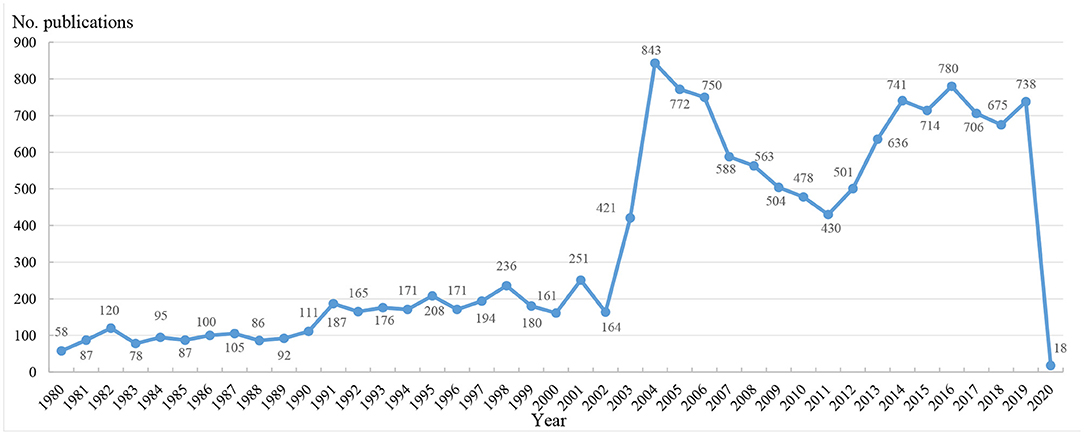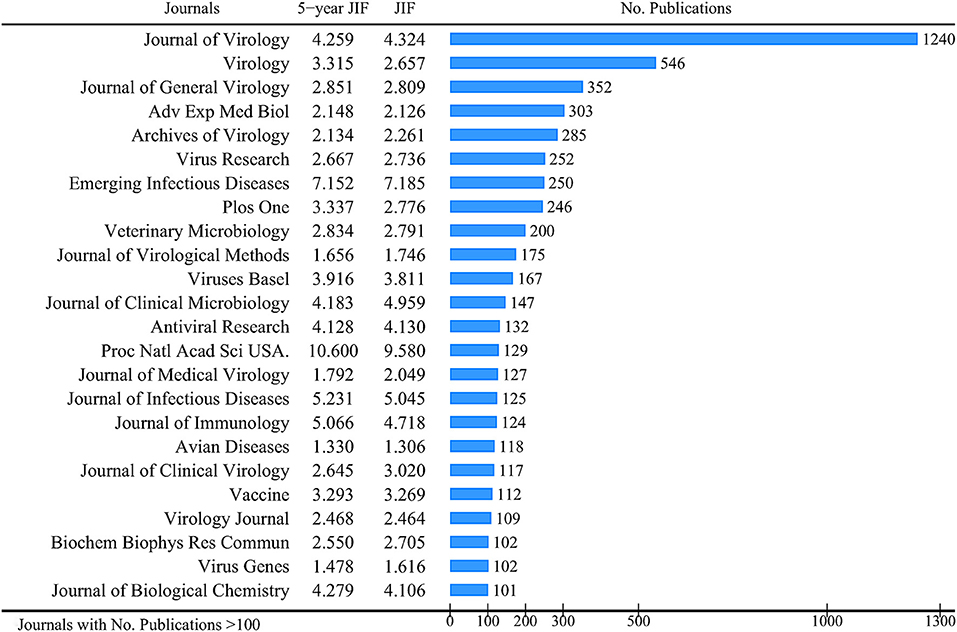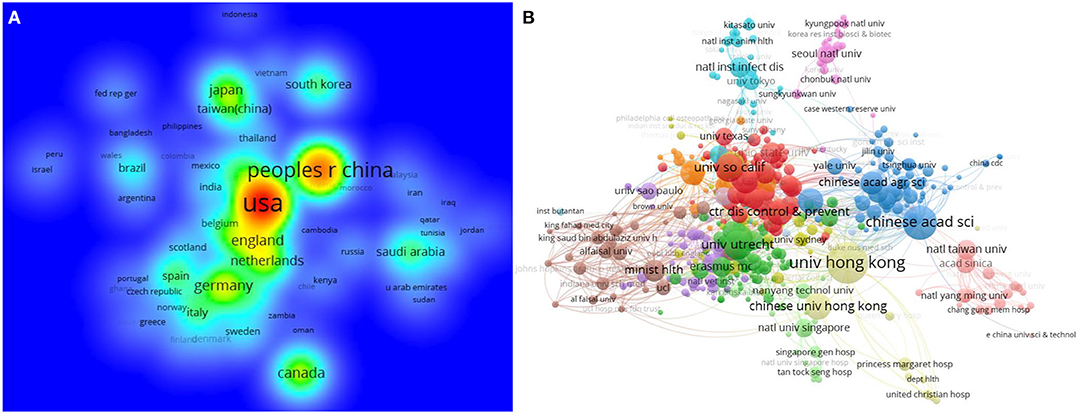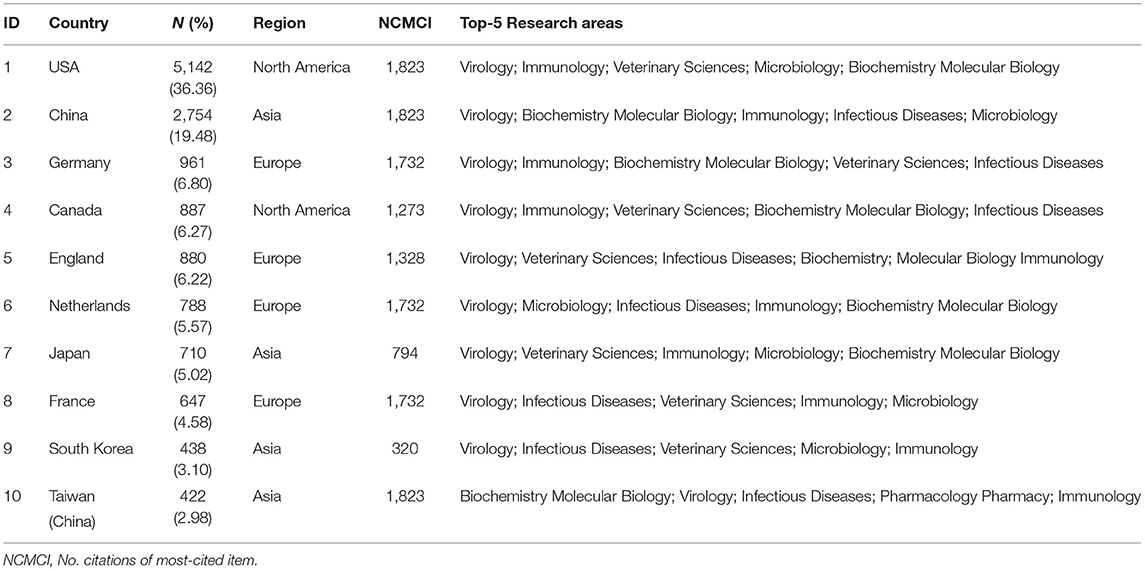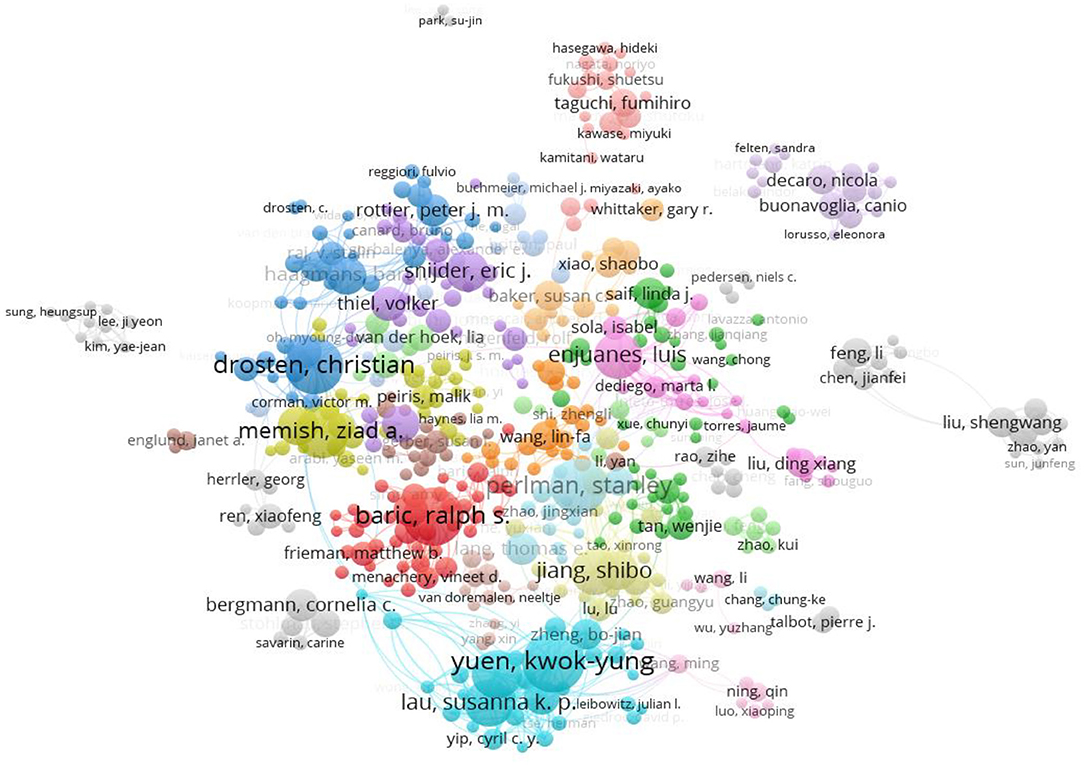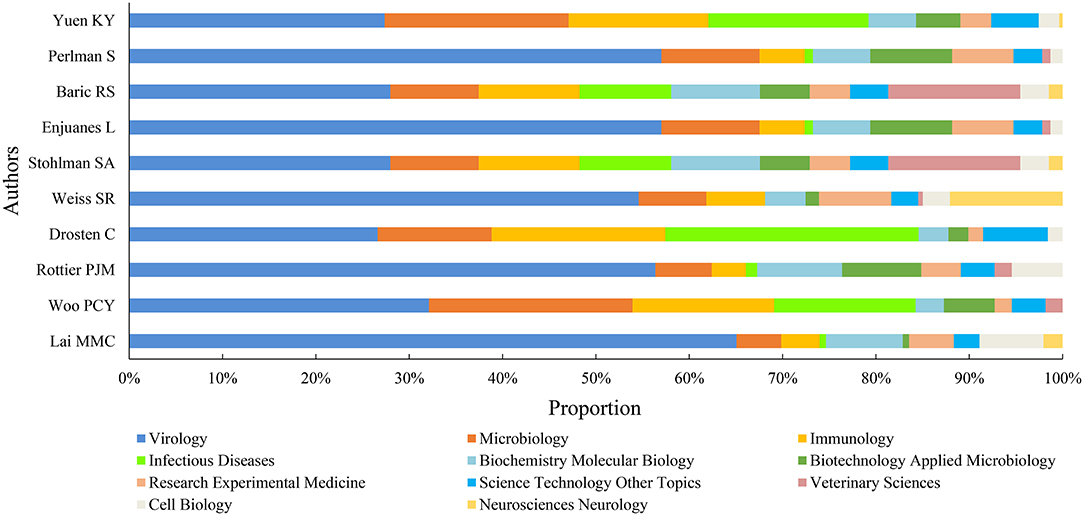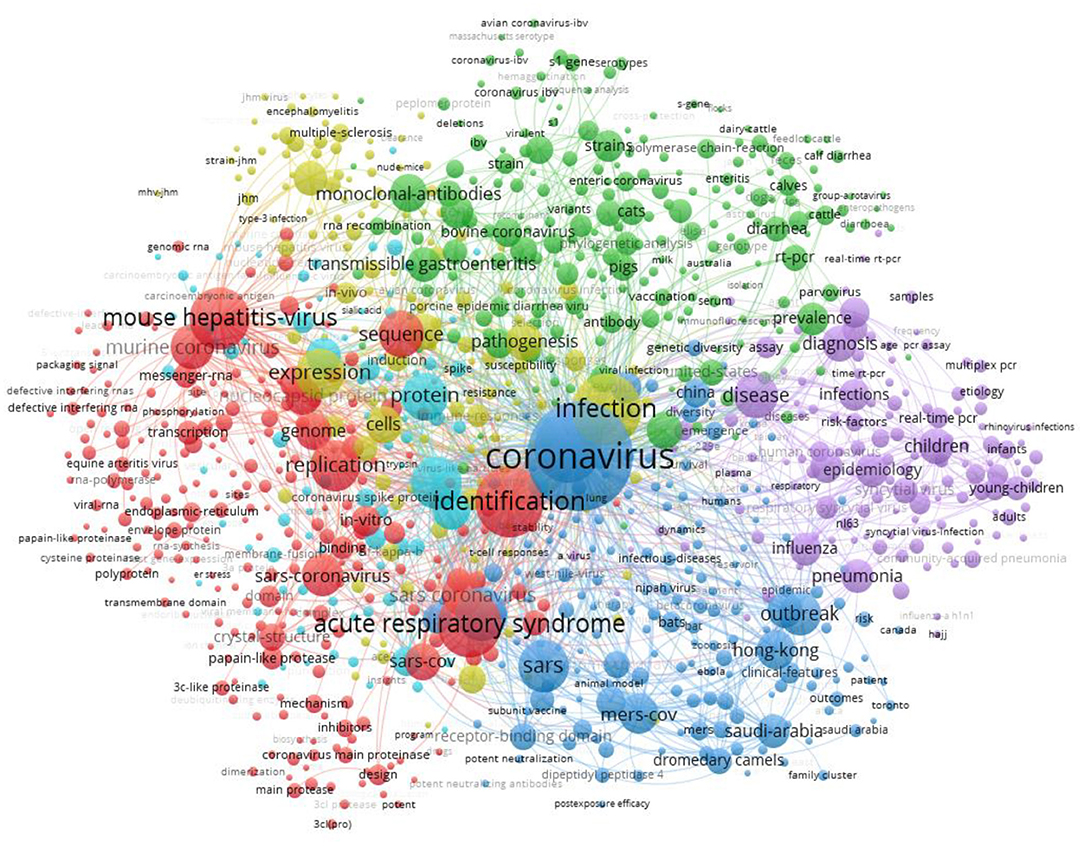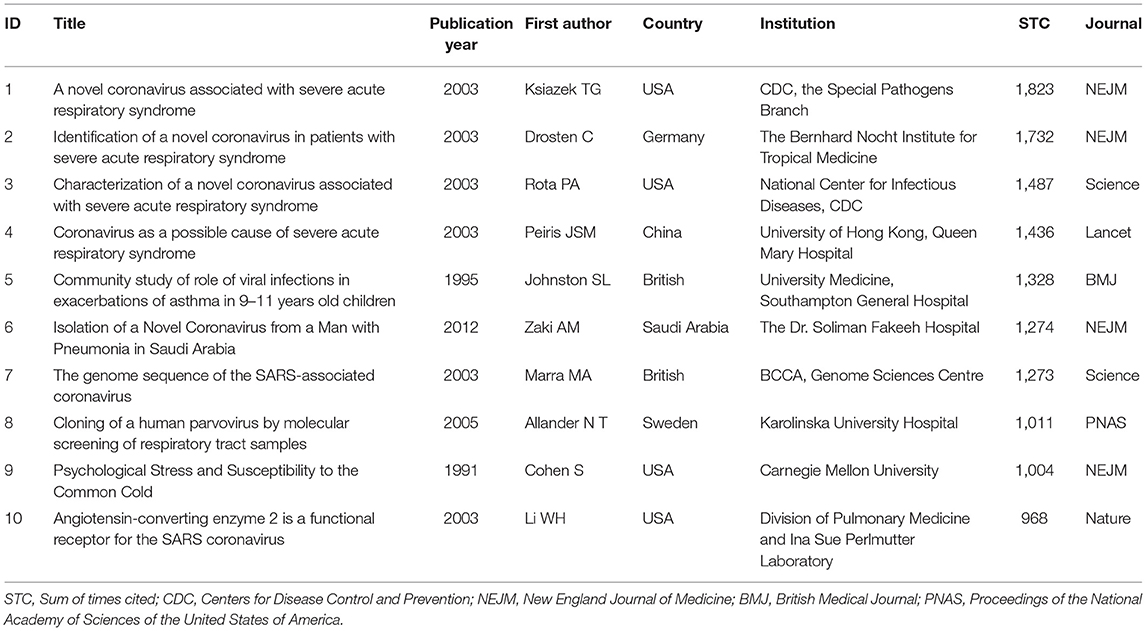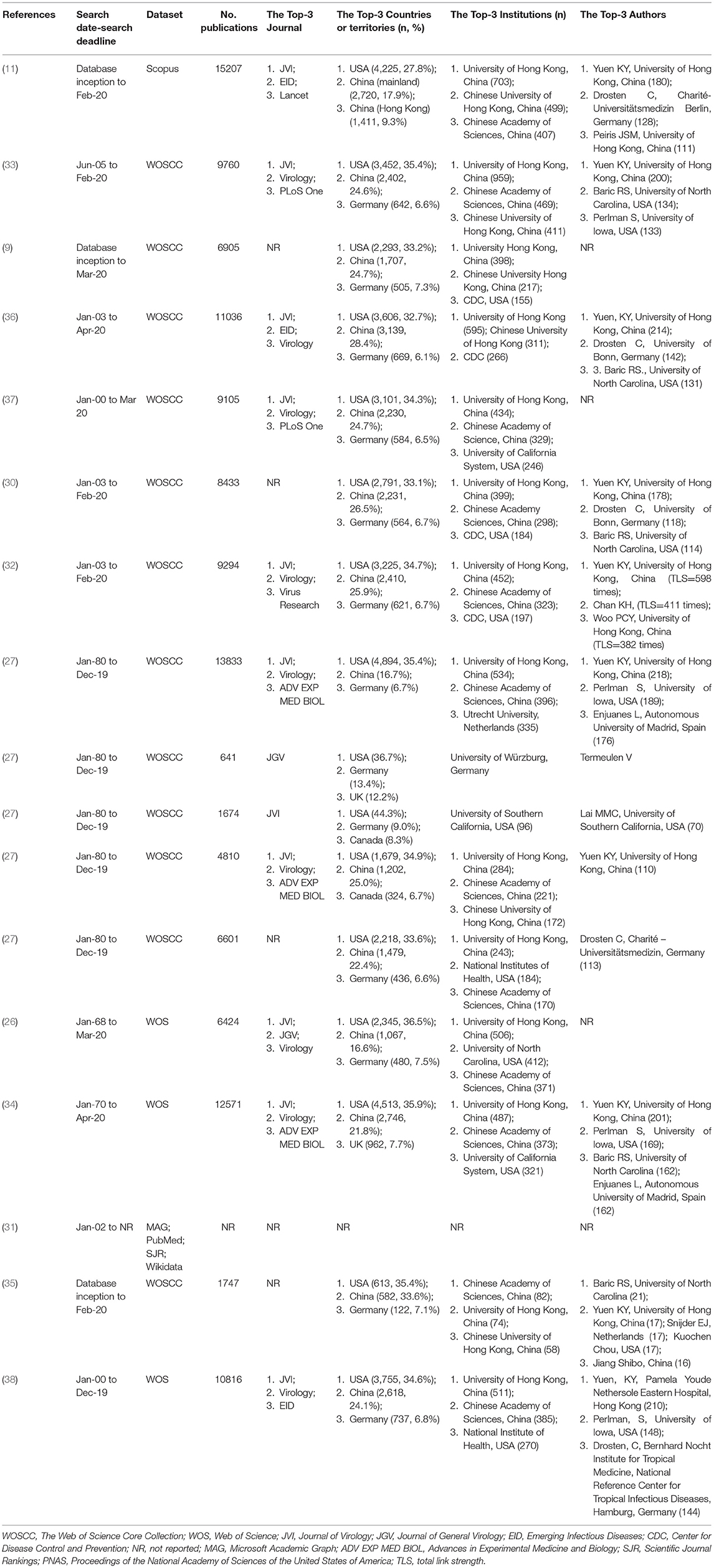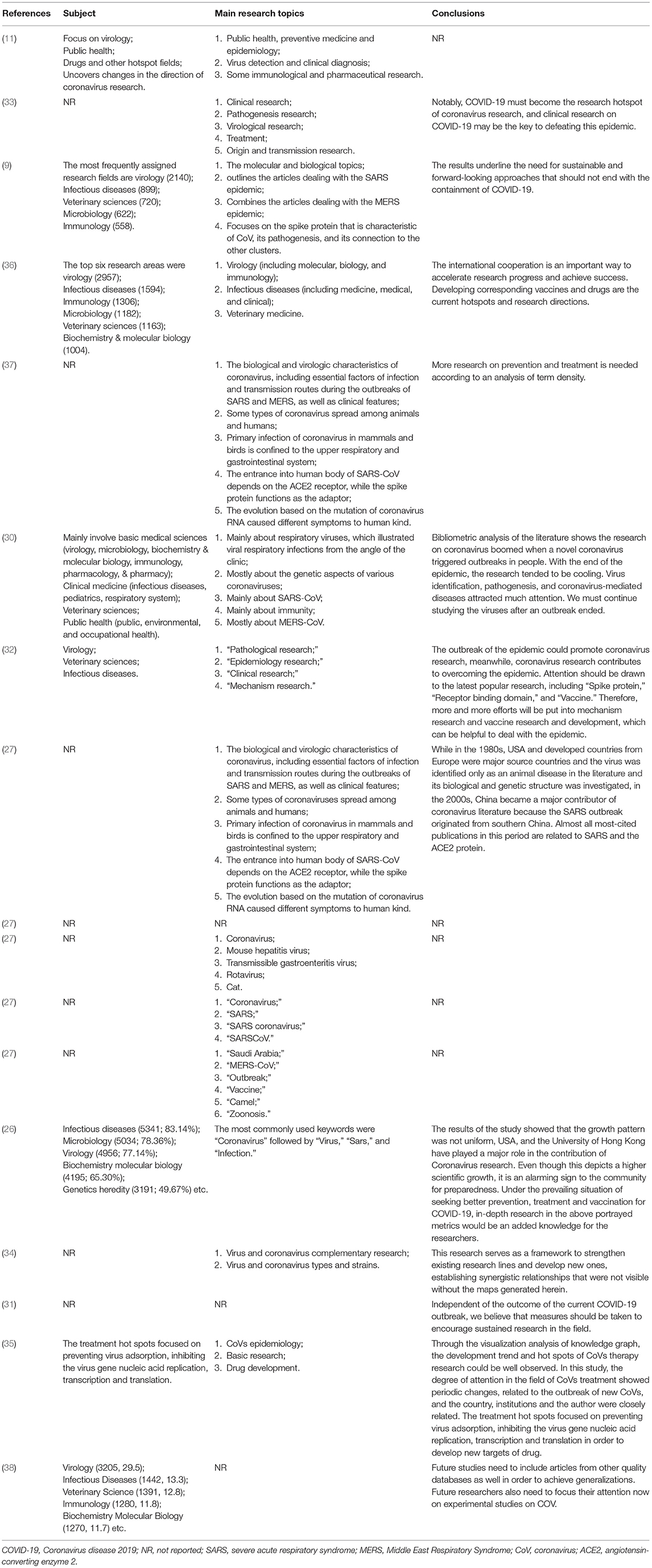- 1Department of Epidemiology and Health Statistics, West China School of Public Health and West China Fourth Hospital, Sichuan University, Chengdu, China
- 2Evidence-Based Medicine Center, School of Basic Medical Sciences, Lanzhou University, Lanzhou, China
- 3Evidence Based Social Science Research Center, School of Public Health, Lanzhou University, Lanzhou, China
- 4Institute of Medical Research, Northwestern Polytechnical University, Xi'an, China
- 5School of Basic Medicine, Gansu University of Chinese Medicine, Lanzhou, China
- 6Department of Scientific Research, Gansu Provincial Hospital, Lanzhou, China
- 7Department of Pathology, 940th Hospital of Joint Logistics Support Force of Chinese People's Liberation Army, Lanzhou, China
- 8Key Laboratory of Evidence Based Medicine and Knowledge Translation of Gansu Province, Lanzhou, China
- 9WHO Collaborating Centre for Guideline Implementation and Knowledge Translation, Lanzhou University, Lanzhou, China
- 10Department of Urology, Lanzhou University Second Hospital, Lanzhou, China
- 11Department of Orthopedics, Wuwei People's Hospital, Wuwei, China
Coronaviruses (CoV) cause respiratory and intestinal infections. We conducted this bibliometric analysis and systematical review to explore the CoV-related research trends from before COVID-19. We systematically searched the Ovid MEDLINE, Ovid Embase, and Web of Science (WOS) databases for published bibliometric analyses of CoV from database inception to January 24, 2021. The WOS Collection was searched from inception to January 31, 2020, to acquire the CoV-related publications before COVID-19. One-Way ANOVA and Bonferroni multiple-comparison tests were used to compare differences. Visualization mapping and keyword cluster graphs were made to illustrate the research topics and hotpots. We included 14,141 CoV-related publications for the bibliometric analysis and 16 (12 articles) CoV-related bibliometric analyses for the systematic review. Both the systematic review and bibliometric analysis showed (1) the number of publications showed two steep upward trajectories in 2003–2004 and in 2012–2014; (2) the research hotpots mainly focused on the mechanism, pathology, epidemiology, clinical diagnosis, and treatment of the coronavirus in MERS-CoV and SARS-Cov; (3) the USA, and China; the University of Hong Kong; and Yuen KY, came from the University of Hong Kong contributed most; (4) the Journal of Virology had the largest number of CoV related studies. More studies should focus on prevention, diagnosis, and treatment in the future.
Introduction
Coronaviruses (CoV) are a large family of positive-sense single-stranded RNA viruses that cause illnesses ranging from the common cold to more severe diseases (1, 2). Some CoV are zoonotic and can cause respiratory and intestinal infections in animals and humans (3), and have even resulted in lethal endemics, such as Middle East Respiratory Syndrome Coronaviruses (MERS-CoV), Severe Acute Respiratory Syndrome Coronaviruses (SARS-CoV), and Coronavirus Disease 2019 (COVID-19) (4).
With the outbreak and epidemic of CoV-related diseases, an increasing number of studies discussed the epidemic characteristics, diagnosis, infection mechanisms, and prevention of CoV (4–8). The appearance of COVID-19 was accelerating such research, which was certainly unique in the history of science and led to an explosion of research output. This output includes many meaningful approaches, but some appear to be excessive and not scientifically sound (9, 10). Against this background, it is very necessary to think about these compelling questions: Can we learn from previous research patterns regarding CoV? What influence do they have on future research? How can we use past efforts, their intensification, and the influences of research on CoV positively to better understand the needs for sustainable and appropriate research? (9). Therefore, it is very important to know about the global research on CoV in the time before COVID-19.
Systematically summarizing and analyzing the research of the CoV is helpful to understand the current state of research and provide references for future research. Bibliometric analysis is a statistical tool that is used to quantitatively and qualitatively measure and evaluate scientific publications (11–13). It consists of a review of the literature, and indicates the number, evaluation, and main trends of publications concerning a specific subject (14, 15).
To the best of our knowledge, there have been two bibliometric studies on CoV-related research in English before the COVID-19 pandemic (16, 17). One study published in 2016 assessed the characteristics of publications only focused on the MERS-CoV (18). Another study (19) analyzed the global research trends of the World Health Organization's top eight emerging infections including Ebola, Marburg, MERS, Severe Acute Respiratory Syndrome (SARS), and so on, but publications related to CoV were not systematically analyzed. A letter to the editor had simply investigated the publication characteristics of SARS-CoV, MERS-CoV, and COVID-19, but it only analyzed the number of publications and countries, which might not be enough to provide a reference for future research (20). In addition, several studies on coronavirus research trends were published in the time before the COVID-19 pandemic. However, some of the research focused on the specific periods, such as 2003 to March 2020. Therefore, we did a bibliometric analysis of all the publications before COVID-19. Additionally, these studies were based on various timespan and databases, and the findings did not well agree. We did this systematic review to summarize the findings of all the current bibliometric analyses in this topic to provide references for researchers focused on the emerging human CoV, and to provide ideas for finding effective control measures, drugs, and vaccines.
Methods
This is a bibliometric analysis and systematic review, and the data we used were extracted from publications. Therefore, this study has no discernible ethical issues.
Data Source and Search Strategy
We searched PubMed, Cochrane Library, and Embase databases using the Medical Subject Headings (MeSH) to acquire the CoV-related terms. For the bibliometric analysis, we searched publications using these terms in the Web of Science (WOS) Core Collection from its inception to January 31, 2020. In terms of the systematic review, we systematically searched the Ovid MEDLINE, Ovid Embase, and WOS databases using terms relating to CoV and bibliometric analysis, for published bibliometric analysis from database inception to January 24, 2021. The detailed search strategy is displayed in Appendix (Appendix, Supplementary Tables 1, 2). No limitation was used. As the metrics are changing over time, all the searches and data exports were completed on the same day to avoid the possible bias caused by frequent updates of the databases.
Eligibility Criteria for Systematic Review
This systematic review included the bibliometric analyses of global CoV research trends. We excluded the bibliometric analyses without any indicators of publication and citation, journal, country or territory, affiliation and international cooperation, author, or subject/research topic. We also excluded conference abstracts, editorials, reviews, meta-analyses, and case reports or case series, as well as non-English and non-Chinese language publications and publications reporting duplicate data.
Data Collection and Cleaning
In terms of bibliometric analysis, we obtained (1) the characteristics of all the retrieved publications; (2) the 2019 journal impact factor (JIF) (21), 5 year JIF (21), and publication counts of the journals; (3) publication count per year, h-index, various citation values [average citations per item (ACPI), sum of times cited (STC) and No. citations of most-cited item (NCMCI)] and top-5 most-publications research areas (top-5 research areas) of the top-10 most-publications countries (top-10 countries); and (4) institutes, h-index, various citation values, and top-5 research areas of the top-10 most-publications authors (top-10 authors). All documents were downloaded in tab separator format.
We standardized the keywords with the same meaning but in different styles. For example, “coronavirus” was replaced by “coronavirus (cov)”, “middle east respiratory syndrome coronavirus” was replaced by “MERS”, etc.
As for the systematic review, one researcher (Y-PB) extracted the information from the included studies using a pre-piloted, standardized extraction table, and the other researcher (P-JY) checked the extraction. Any discrepancies between the reviewers were resolved by discussion. We extracted the following information: (1) study characteristics (first author, publication year, country, journal); (2) search strategies, and (3) indicators or findings on publication and citation, journal, country or territory, affiliation and international cooperation, author, subject/research topics, and keyword co-occurrence cluster.
Since there is no validated quality assessment tool that can be applied to bibliometric analyses, we did not assess the risk of bias or the methodological quality for the included bibliometric analyses.
Statistical Analysis
The data were entered into a spreadsheet program (Microsoft Excel 2016, Microsoft, Washington, USA). The statistical analyses and preparation of the figures were performed using Stata, version 15 (Stata Corp, College Station, TX, USA). For all statistical tests, a two-tailed α level of 0.05 was used.
We used VOSviewer 1.6.1 (Centre for Science and Technology Studies, Leiden University, Leiden, The Netherlands) to analyze the publication characteristics (22, 23). Keywords co-occurrence can effectively reflect the research hotspots in the discipline fields, providing auxiliary support for scientific research (24). VOSviewer was also used for visualization mapping to present co-authorship and co-occurrence networks (25) and generate keywords clustering graph to present the research topic.
Results
Basic Characteristics of CoV–Related Publications
A total of 14,141 publications were retrieved, of which around 77.27% were published as original articles, 8.36 % as reviews, 3.91% as proceedings papers, 3.13% as meeting abstracts, with the remaining being book chapters, etc., (Appendix, Supplementary Figure 1). For the book chapters, the Advances in Experimental Medicine and Biology (273), Advances in Virus Research (26), and Current Topics in Microbiology and Immunology (27) were the top-3 most-publications, others were less than 10 records.
Among these publications, 53.35% (7,544) records did not contain data in the funding agencies; 97.24 % (13,750) were published in English, 0.79 % (111) were in French, 0.75 % (106) were in German, and the remaining were in Spanish, Chinese, and 14 other languages.
The Annual Trends of CoV–Related Publications
Figure 1 plots the annual trends of CoV-related publications. Since the first literature was published in 1980, CoV-related research had a very slow increase in the following 20 years. The number of publications grew very sharply in 2003, hit a peak in 2004 (843), and then declined gradually until another sudden increase in 2012 (Figure 1).
Journals of CoV–Related Publications
The CoV-related publications were published in 500 journals. The 24 journals with more than 100 publications were listed. The journal with the most publications was the Journal of Virology (1,240), followed by Virology (546) and the Journal of General Virology (352). The 2019 JIF ranged from 1.306 (Avian Disease) to 9.580 (Proceedings of The National Academy of Science of The United States of America), and the 5 year JIF ranged from 1.330 to 10.600 (Figure 2).
Countries and Regions of CoV–Related Publications
A total of 134 countries published CoV-related studies. Around 32.49% of those publications were published in North America, 31.49% in Europe, 30.78% in Asia, and the remaining in Oceania, South America, and other regions (Appendix, Supplementary Figure 2). The cooperation network analysis included 88 countries, which with a frequency ≥ 5 times. The density map showed that the top-10 countries were the United States of America (USA) with 5,142, followed by China (2,754), Germany (961), Canada (887), England (880), Netherlands (788), Japan (710), France (647), South Kores (438), and Taiwan (China) (422) (Figure 3A). Among the top-10 countries, 1/5 were from North America, 2/5 from Asia, and the rest from Europe (Table 1). The CoV-related publication count of the top-10 countries over the 41 years is listed in Appendix (Appendix, Supplementary Table 3).
Among these countries, a total of 6,753 institutions were involved in CoV-related publications. A network of 530 institutions with a frequency ≥ 10 was formed. The University of Hong Kong (China), the Chinese Academy of Sciences (China), Utrecht University (Netherlands), the University of Southern California (USA), and the University of Pennsylvania (USA) were at the center of the cooperation network and formed close cooperative relationships with other institutions (Figure 3B).
In terms of STC, h-index, and NCMCI of the top-10 countries, the USA was the most-contributed country with the highest h-index (156), STC (185,165), and NCMCI (1,823), followed by the Netherlands (107) and China (105) in h-index, China (73,101) and the Netherlands (47,486) in STC, and China (1,823) and Taiwan (1,823) in NCMCI (Table 1).
The CoV-related publications of the top-10 countries mainly focused on the following research areas: virology, veterinary sciences, infectious diseases, immunology, biochemistry molecular biology, microbiology, and pharmacology (Table 1, Appendix, Supplementary Figure 3). The most-contributed research area of the top-10 countries was virology, except for Taiwan, which focused on biochemistry molecular biology. The Netherlands contributed more to the virology area than any of the other nine countries (Appendix, Supplementary Figure 3).
Authors of CoV–Related Publications
A total of 43,476 authors were involved in the CoV-related publications, 402 authors with a frequency ≥ 10 times were included in the collaboration network analysis, and 27 cooperation networks were formed. Yuen KY (China), Baric RS (USA), and Drosten C (Germany) had the highest number of publications and were in the middle of the network diagram, which shows that they formed close cooperative relationships with other authors (Figure 4).
The top-10 authors with the most CoV-related publications mainly came from the USA (1/2) and China (1/5), and were focused in the University of Southern California and the University of Hong Kong (Table 2). Most of the top-10 authors came from the departments of microbiology (Table 2) and mainly focused on virology, microbiology, infectious diseases, immunology, and seven other research areas (Figure 5, Table 2). The most-contributed research area of the top-10 authors was virology, except Drosten C who focused on infectious diseases (Figure 5).
Yuen KY had the highest number of publications, h-index, and STC, followed by Perlman S and Baric RS in number of publications, Lai MMC and Baric RS in h-index, and Drosten C and Lai MMC in STC. Drosten C had the highest NCMCI and ACPI, followed by Yuen KY and Woo PCY in NCMCI and Yuen KY and Lai MMC in ACPI (Table 2).
Research Topics of CoV–Related Publications
A total of 23,732 keywords were included in the 14,141 publications, and 973 keywords with occurrence frequency ≥ 20 were clustered. In the cluster figure, one type of color represents one cluster, and a total of five main clusters were formed, indicating that the current CoV-related research concentrated on the following five topics: Topic 1 (red area, 239 items): the detection and identification of SARS-CoV by collecting nucleic acid and protein of virus in vitro; Topic 2 (green area, 211 items): research on the natural history, transmission, and diagnosis of CoV; Topic 3 (blue area, 166 items): research on SARS-CoV outbreaks in China, and the MERS-CoV outbreak in Saudi Arabia; Topic 4 (yellow area, 138 items): research on the mechanisms of viral infection and expression in in vitro cells and lab mice; and Topic 5 (purple area, 133 items): research on pneumonia caused by human infection with CoV and the spread, prevalence, and burden of various diseases caused by infection with other viruses such as avian influenza (Figure 6).
The density map of 973 keywords is presented in the Appendix (Appendix, Supplementary Figure 4). “CoV (3,116 items),” “infection (1,413 items),” “identification” (1,393 items), etc. had the highest frequency in the red area, followed by “diagnosis (395 items),” and the “therapy (69 items)” in the yellow area and “treatment (35 items)” in the green area (Appendix, Supplementary Figure 4).
High-Frequent Citation Articles
Most of the top-10 most-cited publications came from the USA and were in high impact-factor journals such as New England Journal of Medicine, British Medical Journal, and Science. The most frequently cited article (1,823 citations) was published by Ksiazek et al. (28), followed by Drosten et al. (29) (1,732 citations) (Table 3).
Systematic Review of Published Bibliometric Analyses
Study Characteristics of Published Bibliometric Analyses
A total of 17 (9, 11, 26, 27, 30–38) CoV-related bibliometric analyses from 13 articles were included, of which one study (27) conducted five bibliometric analyses. All 17 bibliometric analyses were published in 2020 and included between 641 and 15,207 primary studies (Table 4). Two included articles from India (26, 38), one from Spain (34), one from Turkey (27), two from Israel (9, 31), and the remaining 7 reports were from China (Appendix, Supplementary Table 4). All the 13 included articles were published in journals with IF from 0 to 5.993 (Appendix, Supplementary Table 4). Most of the CoV-related bibliometric analyses (88.2%, 15/17) retrieved data from the WOS up to 2020, and the types of original studies included were mainly articles and reviews. A majority of the CoV-related bibliometric analyses indicated that the annual publication count increased due to three notable epidemic events in history.
Journals, Countries, Institutions, and Authors of CoV-Related Publications in Published Bibliometric Analysis
Six (11, 26, 33, 36–38) of 17 included bibliometric analyses reported the total number of CoV-related research journals (100–3,443), 11 bibliometric analyses (8 articles) (11, 26, 27, 32–34, 36, 37) listed the top 1–20 journals, and all of them reported that the Journal of Virology had the largest number of CoV-related studies (Table 4, Appendix, Supplementary Table 5).
In terms of countries, 6 bibliometric analyses (30, 32, 33, 36–38) reported the total number of CoV-related research by country (78–219), and nearly all of them listed the top 20 most-publications countries countries. In 16 of the 17 bibliometric analyses (9, 11, 26, 27, 30, 32–38) it was indicated that the USA had the largest number of CoV-related publications, followed by China, and their cooperative network diagram showed the most frequent cooperation occurred in the USA and China (Table 4, Appendix, Supplementary Table 5).
As for institutions, 4 bibliometric analyses (30, 33, 35, 38) reported the total number of CoV-related research institutions (147, 242, 333, 6,306 respectively), and 12 bibliometric analyses (9, 11, 26, 27, 30, 32–34, 36–38) indicated that the University of Hong Kong had the largest number of CoV-related publications. Only 5 bibliometric analyses (30, 32, 33, 35, 36) analyzed cooperation among institutions, and their conclusions were inconsistent (Table 4, Appendix, Supplementary Table 5).
Regarding authors, 4 bibliometric analyses (30, 32, 33, 35) reported the total number of CoV-related research authors (121-29515), 12 bibliometric analyses listed top-20 authors (11, 27, 30, 32–36, 38), and 9 of them (11, 27, 30, 32–34, 36, 38) indicated that Yuen KY at the University of Hong Kong had the largest number of CoV-related publications. Collaboration between authors and highly cited authors were not fully analyzed in the included studies, and were only mentioned in 4 bibliometric analyses (30, 33, 35, 36) (Table 4, Appendix, Supplementary Table 5).
Research Topics of CoV-Related Publications in Published Bibliometric Analysis
Four included bibliometric analyses (9, 27, 30, 31) reported the total number of CoV-related research keywords (132–216). Most of the included bibliometric analyses showed that the main research fields of the CoV-related research focused on basic medical sciences (virology, microbiology, biochemistry & molecular biology, immunology, pharmacology, and pharmacy), clinical medicine (infectious diseases, pediatrics, and the respiratory system), veterinary sciences, and public health (public, environmental, and occupational health). The research hotpots mainly focused on the mechanisms, pathology, epidemiology, clinical diagnosis, and treatment of the coronavirus in MERS-CoV and SARS-Cov (Table 5, Appendix, Supplementary Table 6).
Discussion
We found that CoV-related publications showed two steep upward trajectories in 2003–2004 and 2012–2014. The research hotpots mainly focused on the mechanisms, pathology, epidemiology, clinical diagnosis, and treatment of the coronavirus in MERS-CoV and SARS-Cov. The most contributions to CoV-related research were from the USA and China in terms of the country; the University of Hong Kong in terms of the institute; and Yuen KY from the University of Hong Kong, in terms of the author.
The outbreak of SARS and MERS had a vital impact on the number of CoV-related publications. This study and included bibliometric analyses indicated that the number of CoV-related publications showed two steep upward trajectories from 2003 to 2004 and from 2012 to 2014, separately. The trends were consistent with the outbreak of the life-threatening SARS and MERS. The first case of SARS was identified on November 16, 2002, in China (39). The MERS-CoV was first identified in Saudi Arabia in April 2012, and cases have been confirmed every year with some significant rises in 2014, 2015, and 2019 (40). Until 30 June 2019, the majority of cases (84%) had been reported in Saudi Arabia (41). Since they are the places where the virus first appeared, China (No. publications = 2,754) and Saudi Arabia (No. publications = 422) have extensively studied CoV, and their number of publications are ranked 2nd and 11th respectively.
Overall, the USA and China played an important role in CoV-related research, followed by the Netherlands and England. This study found the USA and China were the most contributing countries in terms of STC, h-index, and NCMCI, which was supported by a previous study (20). This study showed that some institutes in the USA, China, and the Netherlands formed close cooperative relationships with other institutes. Because the USA is leading global scientific production, and the effort of the USA to foster international cooperation on CoV-related disease.
Keywords cluster analyses showed that the main research fields of the CoV-related research focused on basic medical sciences (virology, microbiology, biochemistry & molecular biology, immunology, pharmacology, and pharmacy), clinical medicine (infectious diseases, pediatrics, and the respiratory system), veterinary sciences, and public health (public, environmental, and occupational health). The research hotpots mainly focused on the mechanism, pathology, epidemiology, clinical diagnosis, and treatment of the coronavirus in MERS-CoV and SARS-Cov. These findings were in line with the findings of other published bibliometric analyses included in this study. However, the complete research process of virus includes the following: (1) studying the structure and function of the virus genome to fully understand the general morphology and structural characteristics of the virus; (2) exploring the replication, gene expression, and regulatory mechanism of the virus genome, to reveal the molecular nature of the virus infection and disease-causing; (3) researching and developing the virus genetic engineering vaccine and antiviral drugs; (4) studying the diagnosis, prevention, and treatment scheme of the virus infection disease (42, 43). This study showed the current research on CoV mainly focused on the first two stages of virus research. Therefore, there still was a lack of enough research on the related clinical, epidemiological, diagnostic, and therapeutic aspects (44). As the WHO recommended, drugs and vaccines were considered to need accelerated research and development (45), and research on the diagnosis, vaccines, and treatment options for CoV-related diseases should be strengthened (46).
Yuen KY from the University of Hong Kong contributed most to Cov-related research, especially in the fields of virology and microbiology. Followed by Baric RS and Drosten C, both of whom were members of the CoV Study Group (CSG) and assessed the novelty of the human pathogen tentatively named SARS-CoV-2 (47). The research of the CSG will improve understanding of virus-host interactions in an ever-changing environment and enhance our preparedness for future outbreaks (47). In the future, CoV-related researchers can collaborate to conquer the virus.
Strengths and Limitations
To our best knowledge, this is the first systematic review of bibliometric analysis in global coronavirus research trends before COVID-19. We also explored the top-5 research areas of the top-10 countries and top-10 authors in this bibliometric analysis.
However, our study has some limitations.Firstly, for the bibliometric analysis,we only searched WOS, which may lead to the omission of some important studies (48–50). Secondly, some of the data we analyzed were automatically extracted from the downloaded publications by the software, such as author names. Since the software could not distinguish between authors with the same name, this might affect the results of our analyses. Thirdly, for the systematic review, the assessment of the risk of bias for the included studies was important, but we did not conduct the risk of bias assessment for lack of a valid assessment tool.
Conclusions
CoV-related publications before COVID-19 have shown a rapidly increasing trend. The USA and China have played a vital role in CoV-related researches. Yuen KY from the University of Hong Kong has made contributions. The research topics mainly involved the mechanisms, pathology, epidemiology, clinical diagnosis, and treatment of the coronavirus in MERS-CoV and SARS, and more researchers should focus on the prevention, diagnosis, and treatment in the future.
Author Contributions
KY, PY, SW, and ML were responsible for the conception and design of the study. PY was in charge of the literature search data acquisition. PY, ML, ZL, JL, XH, YB, and YX collected, analyzed, and interpreted the data and wrote the first draft of the manuscript. YL was responsible for the editing and standardization of the tables and figures and gave critical advice on the manuscript. All authors reviewed the manuscript for important intellectual content and approved the final version for publication.
Funding
This work was supported by the Key Project of the Social Science Fund of Gansu Province: Social Research on the Response to COVID-19 in Gansu Province (Grant No. 20ZD016) and Fundamental Research Funds for the Central Universities (Grant No. lzujbky-2020-sp14).
Conflict of Interest
The authors declare that the research was conducted in the absence of any commercial or financial relationships that could be construed as a potential conflict of interest.
Publisher's Note
All claims expressed in this article are solely those of the authors and do not necessarily represent those of their affiliated organizations, or those of the publisher, the editors and the reviewers. Any product that may be evaluated in this article, or claim that may be made by its manufacturer, is not guaranteed or endorsed by the publisher.
Supplementary Material
The Supplementary Material for this article can be found online at: https://www.frontiersin.org/articles/10.3389/fmed.2021.729138/full#supplementary-material
References
1. WHO. Coronaviruses. (2020). Available online at: https://www.who.int/health-topics/coronavirus (accessed Febuary 10, 2020).
2. Yadav R, Chaudhary JK, Jain N, Chaudhary PK, Khanra S, Dhamija P, et al. Role of structural and non-structural proteins and therapeutic targets of SARS-CoV-2 for COVID-19. Cells. (2021) 10:821. doi: 10.3390/cells10040821
3. Cui J, Li F, Shi ZL. Origin and evolution of pathogenic coronaviruses. Nat Rev Microbiol. (2019) 17:181–92. doi: 10.1038/s41579-018-0118-9
4. Backer JA, Klinkenberg D, Wallinga J. Incubation period of 2019 novel coronavirus (2019-nCoV) infections among travellers from Wuhan, China, 20-28 January 2020. Euro Surveill. (2020) 25:1–6. doi: 10.2807/1560-7917.ES.2020.25.5.2000062
5. Liu P, Niu R, Chen J, Tang Y, Tang W, Xu L, et al. Epidemiological and clinical features in patients with coronavirus disease 2019 outside of Wuhan, China: special focus in asymptomatic patients. PLoS Negl Trop Dis. (2021) 15:e0009248. doi: 10.1371/journal.pntd.0009248
6. Tu H, Tu S, Gao S, Shao A, Sheng J. Current epidemiological and clinical features of COVID-19; a global perspective from China. J Infect. (2020) 81:1–9. doi: 10.1016/j.jinf.2020.04.011
7. Li Y, Cao L, Zhang Z, Hou L, Qin Y, Hui X, et al. Reporting and methodological quality of COVID-19 systematic reviews needs to be improved: an evidence mapping. J Clin Epidemiol. (2021) 135:17–28. doi: 10.1016/j.jclinepi.2021.02.021
8. Li J, Du W, Yan P, Yang K. [Subject topics and dissemination clustering of COVID-19 epidemic studies at home and abroad]. Libr Inf. (2021) 67–74. doi: 10.11968/tsyqb.1003-6938.2021025
9. Klingelhöfer D, Braun M, Brüggmann D, Groneberg DA. Coronavirus: an insight into global research until outbreak of COVID-19 and its implications for the future. J Glob Health. (2020) 10:020508. doi: 10.7189/jogh.10.020508
10. Goh S. Who will guard the guards? Covid-19 research may be incomplete, but experts are vital during this pandemic. BMJ. (2020) 370:m2658. doi: 10.1136/bmj.m2658
11. Deng Z, Chen J, Wang T. Bibliometric and visualization analysis of human coronaviruses: prospects and implications for COVID-19 research. Front Cell Infect Microbiol. (2020) 10:581404. doi: 10.3389/fcimb.2020.581404
12. Usman M, Ho YS. A bibliometric study of the fenton oxidation for soil and water remediation. J Environ Manage. (2020) 270:110886. doi: 10.1016/j.jenvman.2020.110886
13. Deng Z, Wang H, Chen Z, Wang T. Bibliometric analysis of dendritic epidermal T Cell (DETC) research from 1983 to 2019. Front Immunol. (2020) 11:259. doi: 10.3389/fimmu.2020.00259
14. Global I. What is Bibliometric Analysis. (2020). Available online at: https://www.igi-global.com/dictionary/education-literature-development-responsibility/2406 (accessed March 1, 2020).
15. Blakeman K. Bibliometrics in a digital age: help or hindrance. Sci Prog. (2018) 101:293–310. doi: 10.3184/003685018X15337564592469
16. Zyoud SH. Global research trends of middle east respiratory syndrome coronavirus: a bibliometric analysis. BMC Infect Dis. (2016) 16:1–7. doi: 10.1186/s12879-016-1600-5
17. Wang Z, Chen Y, Cai G, Jiang Z, Liu K, Chen B, et al. A bibliometric analysis of pubmed literature on middle east respiratory syndrome. Int J Environ Res Public Health. (2016) 13:1–9. doi: 10.3390/ijerph13060583
18. Beal J, Mitchell T, Wyschogrod D, Manthey J, Clore A. Highly distinguished amino acid sequences of 2019-nCoV (Wuhan Coronavirus). bioRxiv. (2020). doi: 10.1101/2020.01.31.929497
19. Sweileh WM. Global research trends of World Health Organization's top eight emerging pathogens. Global Health. (2017) 13:9–29. doi: 10.1186/s12992-017-0233-9
20. Bonilla-Aldana DK, Quintero-Rada K, Montoya-Posada JP, Ramirez-Ocampo S, Paniz-Mondolfi A, Rabaan AA, et al. SARS-CoV, MERS-CoV and now the 2019-novel CoV: have we investigated enough about coronaviruses?-a bibliometric analysis. Travel Med Infect Dis. (2020) 33:101566. doi: 10.1016/j.tmaid.2020.101566
21. Thomson Reuters. Journal Citation Reports. (2020). Available online at: https://jcr.clarivate.com/JCRJournalHomeAction.action (accessed January 10, 2020).
22. Chen C, Hu Z, Liu S, Tseng H. Emerging trends in regenerative medicine: a scientometric analysis in citespace. Expert Opin Biol Ther. (2012) 12:593–608. doi: 10.1517/14712598.2012.674507
23. van Eck NJ, Waltman L. Software survey: VOSviewer, a computer program for bibliometric mapping. Scientometrics. (2010) 84:523–38. doi: 10.1007/s11192-009-0146-3
24. Shi J-g, Miao W, Si H. Visualization and analysis of mapping knowledge domain of urban vitality research. Sustainability. (2019) 11:988. doi: 10.3390/su11040988
25. Wrigley J, Carden V, von Isenburg M. Bibliometric mapping for current and potential collaboration detection. J Med Libr Assoc. (2019) 107:597–600. doi: 10.5195/jmla.2019.764
26. Joshua V, Sivaprakasam S. Coronavirus: bibliometric analysis of scientific publications from 1968 to 2020. Med J Islam Repub Iran. (2020) 34:64. doi: 10.47176/mjiri.34.64
27. Enel E, Topal FEJDM, Preparedness PH. Holistic Analysis of Coronavirus Literature: A Scientometric Study of the Global Publications Relevant to SARS-CoV-2 (COVID-19), MERS-CoV (MERS) and SARS-CoV (SARS). Disaster Med Public Health Prep. (2020) 1–15. doi: 10.1017/dmp.2020.300
28. Ksiazek TG, Erdman D, Goldsmith CS, Zaki SR, Peret T, Emery S, et al. A novel coronavirus associated with severe acute respiratory syndrome. N Engl J Med. (2003) 348:1953–66. doi: 10.1056/NEJMoa030781
29. Drosten C, Günther S, Preiser W, van der Werf S, Brodt HR, Becker S, et al. Identification of a novel coronavirus in patients with severe acute respiratory syndrome. N Engl J Med. (2003) 348:1967–76. doi: 10.1056/NEJMoa030747
30. Jia Q, Shi S, Yuan G, Shi J, Shi S, Hu Y. Analysis of knowledge bases and research hotspots of coronavirus from the perspective of mapping knowledge domain. Medicine. (2020) 99:e20378. doi: 10.1097/md.0000000000020378
31. Kagan D, Moran-Gilad J, Fire M. Scientometric trends for coronaviruses and other emerging viral infections. Gigascience. (2020) 9:1–17. doi: 10.1093/gigascience/giaa085
32. Mao XJ, Guo L, Fu PF, Xiang C. The status and trends of coronavirus research A global bibliometric and visualized analysis. Medicine. (2020) 99:e20137. doi: 10.1097/md.0000000000020137
33. Tao Z, Zhou S, Yao R, Wen K, Da W, Meng Y, et al. COVID-19 will stimulate a new coronavirus research breakthrough: a 20-year bibliometric analysis. Ann Transl Med. (2020) 8:528. doi: 10.21037/atm.2020.04.26
34. Herrera-Viedma E, Lopez-Robles JR, Guallar J, Cobo MJ. Global trends in coronavirus research at the time of Covid-19: a general bibliometric approach and content analysis using SciMAT. Profesional De La Informacion. (2020) 29:e290322. doi: 10.3145/epi.2020.may.22
35. Yi W, Wang Y, Tang J, Xiong X, Zhang Y, Yan S. [Visualization analysis on treatment of coronavirus based on knowledge graph]. Zhonghua Wei Zhong Bing Ji Jiu Yi Xue. (2020) 32:279–86. doi: 10.3760/cma.j.cn121430-20200225-00200
36. Zhai F, Zhai Y, Cong C, Song T, Xiang R, Feng T, et al. Research progress of coronavirus based on bibliometric analysis. Int J Environ Res Public Health. (2020) 17:3766. doi: 10.3390/ijerph17113766
37. Zhou Y, Chen L. Twenty-year span of global coronavirus research trends: a bibliometric analysis. Int J Environ Res Public Health. (2020) 17:3082. doi: 10.3390/ijerph17093082
38. Ali A, AhmadHakak I, Amin F. Assessing the coronavirus research output: a bibliometric analysis. Glob Bus Rev. (2020). doi: 10.1177/0972150920975116
39. Zhong NS, Zheng BJ, Li YM, Poon Xie ZH, Chan KH, et al. Epidemiology and cause of severe acute respiratory syndrome (SARS) in Guangdong, people's republic of China, in February, 2003. Lancet. (2003) 362:1353–8. doi: 10.1016/S0140-6736(03)14630-2
40. CDC E. European Centre for Disease Prevention and Control. Distribution of confirmed MERS-CoV cases. (2019). Available online at: https://www.ecdc.europa.eu/en/middle-east-respiratory-syndrome-coronavirus-mers-cov-situation-update (accessed Febuary 16, 2020).
41. WHO World Health Organization. WHO MERS Global Summary and Assessment of Risk. (2019). Available online at: https://apps.who.int/iris/bitstream/handle/10665/326126/WHO-MERS-RA-19.1-eng.pdf?ua=1 (accessed Febuary 17, 2020).
42. Solomon T, Lewthwaite P, Perera D, Cardosa MJ, Ooi MH. Virology, epidemiology, pathogenesis, and control of enterovirus 71. Lancet Infect Dis. (2010) 10:778–90. doi: 10.1016/S1473-3099(10)70194-8
43. Lau JY. Wright TL. Molecular virology and pathogenesis of hepatitis B. Lancet. (1993) 342:1335–40. doi: 10.1016/0140-6736(93)92249-S
44. Momattin H, Al-Ali AY, Al-Tawfiq JA. A systematic review of therapeutic agents for the treatment of the middle east respiratory syndrome coronavirus (MERS-CoV). Travel Med Infect Dis. (2019) 30:9–18. doi: 10.1016/j.tmaid.2019.06.012
45. WHO World Health Organization. 2018 Annual review of diseases prioritized under the Research andDevelopment Blueprint. (2018). Available online at: https://www.who.int/news-room/events/detail/2018/02/06/default-calendar/2018-annual-review-of-diseases-prioritized-under-the-research-anddevelopment-blueprint (accessed March 1, 2020).
46. Zarocostas J. What next for the coronavirus response? Lancet. (2020) 395:401. doi: 10.1016/S0140-6736(20)30292-0
47. Gorbalenya AE, Baker SC, Baric RS, de Groot RJ, Drosten C, Gulyaeva AA, et al. The species Severe acute respiratory syndrome-related coronavirus: classifying 2019-nCoV and naming it SARS-CoV-2. Nat Microbiol. (2020) 5:536–44. doi: 10.1038/s41564-020-0695-z
48. Ge L, Tian J-h, Li Y-n, Pan J-x, Li G, Wei D, et al. Association between prospective registration and overall reporting and methodological quality of systematic reviews: a meta-epidemiological study. J Clin Epidemiol. (2018) 93:45–55. doi: 10.1016/j.jclinepi.2017.10.012
49. Lun Li, Jinhui Tian, Hongliang Tian, et al. Network meta-analyses could be improved by searching more sources and by involving a librarian. J Clin Epidemiol. (2014) 67:1001–7. doi: 10.1016/j.jclinepi.2014.04.003
Keywords: Coronaviruses, COVID-19, bibliometric analysis, systematic review, contribution, research topics
Citation: Yan P, Li M, Li J, Lu Z, Hui X, Bai Y, Xun Y, Lao Y, Wang S and Yang K (2021) Bibliometric Analysis and Systematic Review of Global Coronavirus Research Trends Before COVID-19: Prospects and Implications for COVID-19 Research. Front. Med. 8:729138. doi: 10.3389/fmed.2021.729138
Received: 22 June 2021; Accepted: 04 October 2021;
Published: 16 November 2021.
Edited by:
Reza Lashgari, Shahid Beheshti University, IranReviewed by:
Faris Hasan al Lami, University of Baghdad, IraqVasna Joshua, National Institute of Epidemiology (ICMR), India
Copyright © 2021 Yan, Li, Li, Lu, Hui, Bai, Xun, Lao, Wang and Yang. This is an open-access article distributed under the terms of the Creative Commons Attribution License (CC BY). The use, distribution or reproduction in other forums is permitted, provided the original author(s) and the copyright owner(s) are credited and that the original publication in this journal is cited, in accordance with accepted academic practice. No use, distribution or reproduction is permitted which does not comply with these terms.
*Correspondence: Kehu Yang, eWFuZ2toLWVibUBsenUuZWR1LmNu; Shizhong Wang, V2FuZ3NoaXpob25nLXd1d2VpMjAyMUAxNjMuY29t
†These authors have contributed equally to this work
 Peijing Yan
Peijing Yan Meixuan Li
Meixuan Li Jing Li3,2
Jing Li3,2 Kehu Yang
Kehu Yang